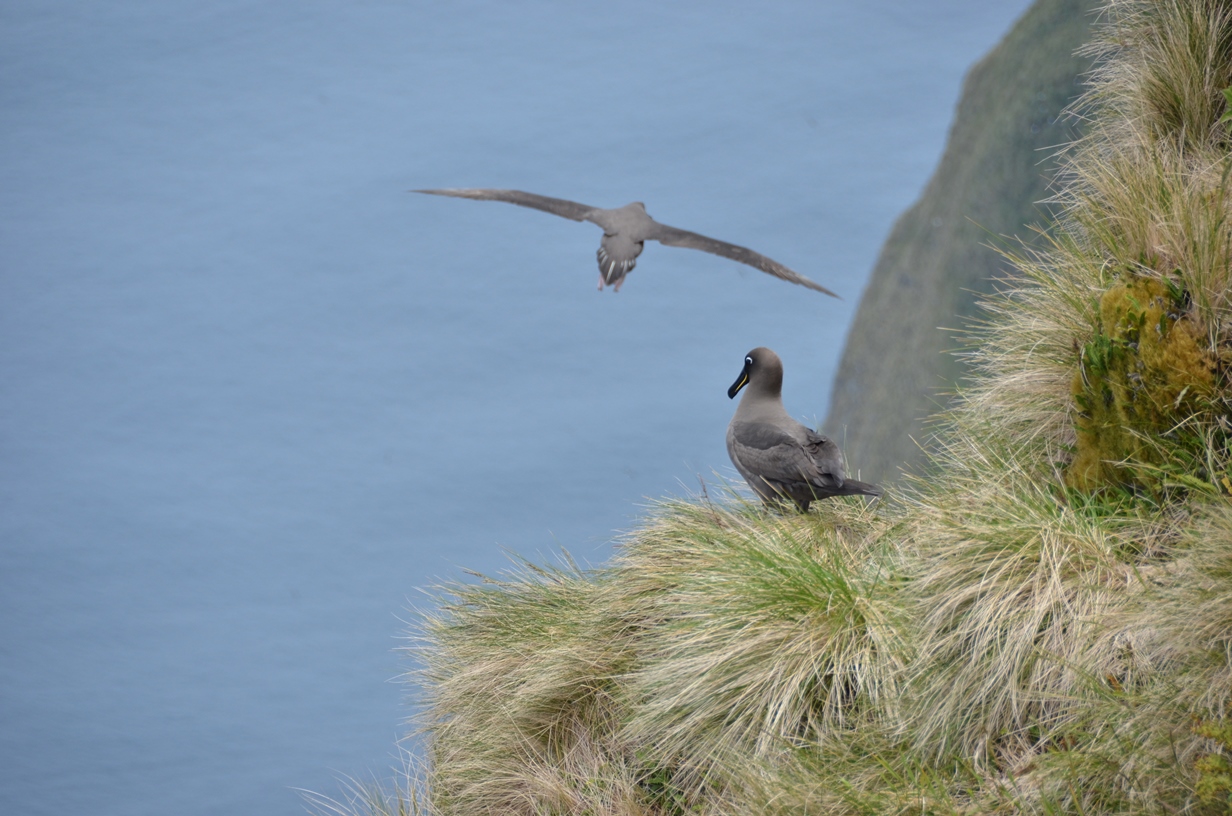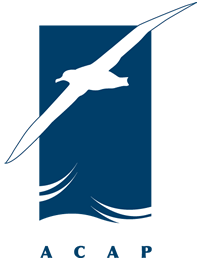 Sooty Albatrosses on Amsterdam Island, photograph by Jeremie Demay
Sooty Albatrosses on Amsterdam Island, photograph by Jeremie Demay
Camille Schatz (Centre d’Etudes Biologiques de Chizé, Villiers-en-Bois, France) and colleagues have published open access in the ornithological journal Oikos on analysing long-term recapture data sets for four populations of Sooty Phoebetria fusca and Light-mantled P. palpebratq Albatrosses breeding on three French islands in the southern Indian Ocean.
The paper’s abstract follows:
“The variability in responses to environmental change between populations remains poorly quantified and understood. This shortcoming has major consequences, as variation and flexibility of life-history traits between populations contribute to the estimation of the adaptive potential, which is necessary for predicting the responses of interconnected populations to environmental change. Here, we use 20–50 years of capture-mark-recapture data from four populations of two closely related species in the southern Indian Ocean, the sooty albatross Phoebetria fusca and the light-mantled sooty albatross Phoebetria palpebrata, to analyze their demographic responses to environmental changes across an oceanic basin scale. We assessed the role of climate and oceanographic conditions as bottom–up forcings and fisheries bycatch as a top–down forcing on survival and three reproductive parameters in each population. We found expected demographic responses: negative effects of fishing effort on survival and breeding success, positive effects of wind velocity on breeding success, negative effects of warm sea surface temperature anomalies, and positive effects of sea ice concentration. Furthermore, our results highlight differences between populations, revealing three main outcomes. First, the two populations situated at the edge of their distribution seemed more affected by variations in oceanographic conditions than counterparts situated within the core of their ranges. Second, the two northernmost populations experiencing lower wind speed, had their breeding success affected by meridional wind speed. Third, a large-scale climate index had opposite effects on demographic parameters of the two populations situated in the western and eastern parts of the southern Indian Ocean. This comparison of the variation in demographic responses to environmental conditions at the inter-population level, sheds light on our limited understanding of the processes that account for life-history trait variation between populations and suggests that local environmental conditions and large-scale climate patterns may drive the diversity of local ecological responses across species' ranges.”
With thanks to Karine Delord.
Reference:
Schatz, C., Delord, K., Joubert, D., Peretou, S., Sun, R. & Barbraud, C. 2025. Inter-population variation in demographic responses to environmental changes: insights from four seabird populations. Oikos doi.org/10.1002/oik.11364.
John Cooper, Emeritus Information Officer, Agreement on the Conservation of Albatrosses and Petrels, 09 October 2025

 Español
Español  English
English  Français
Français